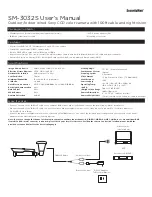
Nonidealities
61
5
5.4.2 Photometric Error
At high absorbances (generally greater than 1 AU), a combination of effects can produce
slight departures (about 1%) from Beer’s Law due to photometric error. Although
photometric errors at this level may have a negligible effect on quantitation, they can be a
significant source of spectral inhomogeneity. To minimize the effects of photometric error
for all Spectral Contrast operations, the maximum spectral absorbance of a compound
should be less than 1 AU. Keep in mind that the absorbance of the mobile phase reduces
the working linear dynamic range by the amount of mobile phase absorbance at each
wavelength. For examples of mobile phase absorbance, see
Note:
For more information about the effects of the photometric error curve, refer to
Principles of Instrumental Analysis, third edition, by Douglas A. Skoog, Saunders College
Publishing,1985, pp 168–172.
5.4.3 Solvent Changes
As long as solvent concentration and composition do not change (isocratic operation), the
background absorbance, if any, by the solvent remains constant. A change, however, in
solvent pH or composition, such as occurs in gradient operation, can affect the intrinsic
spectral shape of a compound, as shown in
.
5.4.4 Threshold Angle
In addition to computing Spectral Contrast angles, the Spectral Contrast technique also
computes a Threshold angle. The Threshold angle is the maximum Spectral Contrast
angle between spectra that can be attributed to nonideal phenomena.
Comparison of a Spectral Contrast angle to its Threshold angle can assist in determining if
the shape difference between spectra is genuine, that is, generated by mixtures that are
dissimilar. In general, a Spectral Contrast angle less than its Threshold angle indicates
that shape differences can be attributed to nonideal phenomena alone, and that there is
no evidence for genuine differences between the spectra. A Spectral Contrast angle
greater than its Threshold angle indicates that the shape differences are due to genuine
differences between the spectra.
















































